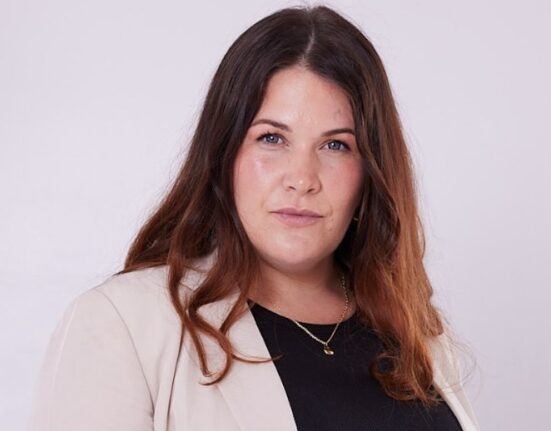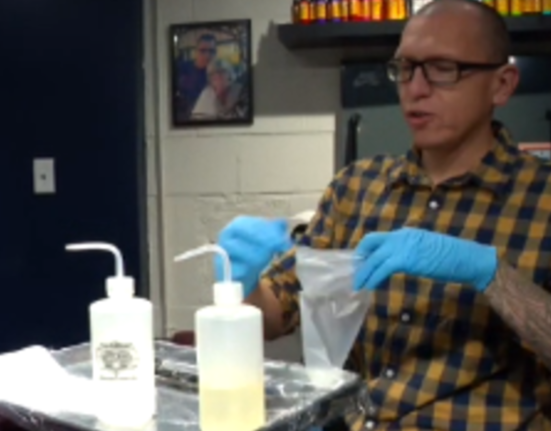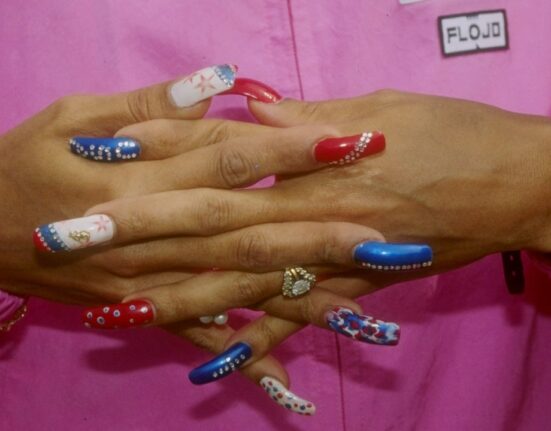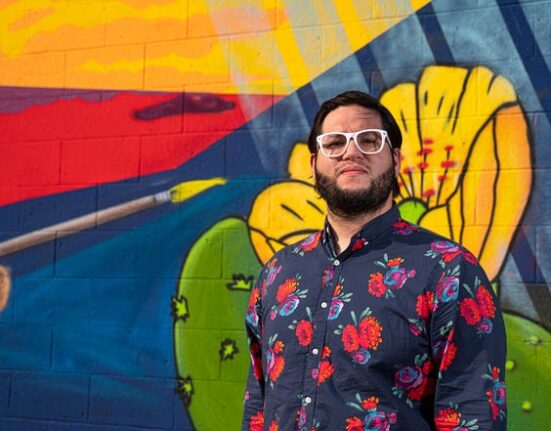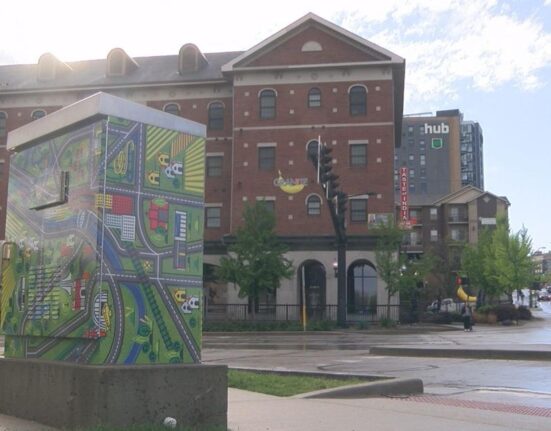KALAMAZOO, MI — What makes an artist?
An artist can be virtually anyone. An artist can be a writer, painter, musician, novelist, performer, actor, sculptor, architect, screenwriter, playwright, choreographer, curator, stylist, makeup extraordinaire, FX (special effects) artist, graphic novelist, interior designer, bullet journalist, journalist, composer, producer, coordinator, casting specialist, product designer — you name it. Not only this but according to Biden-Harris STEAM (Science, Technology, Engineering, Arts, and Mathematics) caucus co-chair, a proper arts education has a longstanding positive impact on all youth throughout their lives, “not just the ones who choose to be artists.”
Almost all careers, jobs, gigs, and pastime occupations on this Earth somehow and somewhere connect back to the arts. Everyone is an artist. “Art is born in attention,” claims Julia Cameron, legendary author of “The Artist’s Way,” a workshop and book that connects artists to their deeper potential. If that’s the case, anything that people pay attention to is some form of art. Anyone can be an artist, but when speaking on the roles and responsibilities of the artist, Albert Camus wrote, “Art advances between two chasms, which are frivolity and propaganda.”
So how do we as humans use our artistic gifts to make the world better than we found it?


On Tuesday, January 30, 2024, the National Endowment of the Arts teamed up with the Biden-Harris administration in an ongoing effort to champion the arts and culture economy with a historical first-of-its-kind summit entitled “Healing, Bridging, Thriving, A Summit on Arts and Culture in Our Communities.”
The goal of this summit was to inform the public on the push to open doors in arts and culture in the United States to support the burgeoning efforts of artists and arts organizations to integrate the arts into broader institutions and to curtail the ever-lucrative creative market amid the climate crisis, an epidemic of gun violence and hate crimes and an information crisis. While this was a historical first summit of its kind, social practice artists and community organizers have been doing this work from within their communities for quite some time.
George Floyd: A turning point
At twenty-one years old I listened to a lot of SZA, had no solid form of housing, walking from couch to couch with a suitcase and a giant canvas in the Vine Neighborhood of Kalamazoo. At twenty-one years old it was apparent that black people were dying all around me, and despite little to no resources I decided to take action. Soon it is 2020, and I will have organized an event of over eight hundred and fifty people in Bronson Park with two other young women to protest the murders of George Floyd, Breonna Taylor, and Sandra Bland. By 2020, the outcome of my artistic initiatives around this protest and in my community made it possible for me to sign the lease for my first apartment.
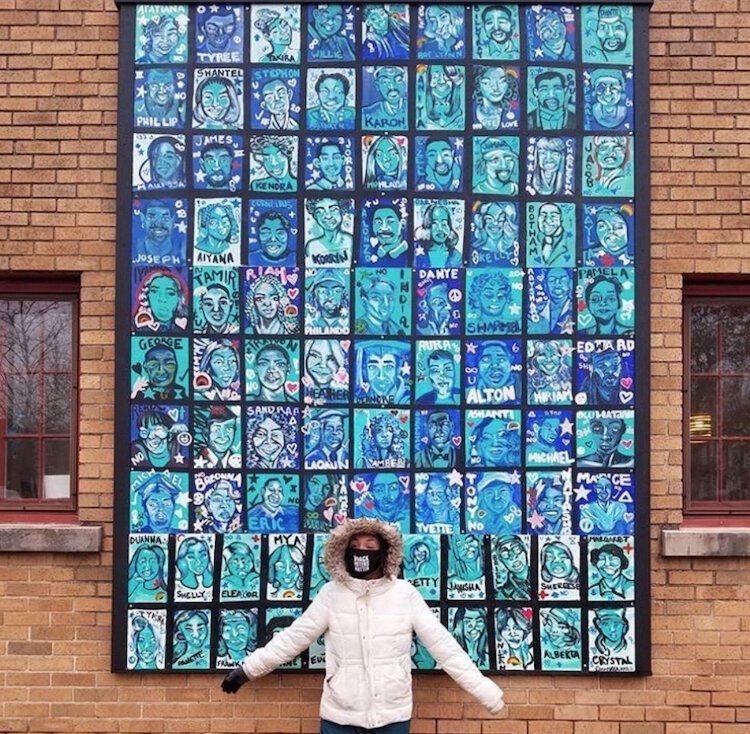
 Social Practice Artist Maya James with her first permanent public mural By 2020, I organized the first Juneteenth block party in the Vine Neighborhood. By 2020, I completed my first mural, a permanent public depiction of 94 victims of police and mob violence in the United States. Today, in 2024, I have won multiple awards including the Vanguard Award in ArtPrize 2023, published a graphic novel entitled “LUKUMI,” and was the first black woman to be granted a residency at Dearborn City Hall ArtSpace Lofts. Today I partner with multiple nonprofits, businesses, movements, collectives, institutions, and organizations in the pursuit of art for social change.
Social Practice Artist Maya James with her first permanent public mural By 2020, I organized the first Juneteenth block party in the Vine Neighborhood. By 2020, I completed my first mural, a permanent public depiction of 94 victims of police and mob violence in the United States. Today, in 2024, I have won multiple awards including the Vanguard Award in ArtPrize 2023, published a graphic novel entitled “LUKUMI,” and was the first black woman to be granted a residency at Dearborn City Hall ArtSpace Lofts. Today I partner with multiple nonprofits, businesses, movements, collectives, institutions, and organizations in the pursuit of art for social change.
It was not until this year, during a meeting with one of my heroes in the arts that I discovered the term for what it is I do. Adia Millett, an artist who has shown her award-winning impeccable works at the Kalamazoo Institute of the Arts, recently referred to me as a “social practice artist” in a meeting. So many years of using thousands of different clunky terms to describe my combination of arts and advocacy and in a day she summarizes it concisely as a “social practice artist.” It blew my mind. Even further, it turns out, based on the timeline, nature, and trajectory of my career, I very well may be one of the mothers of the medium.

 Maya James working on Social practice art, also known as ‘relational aesthetics’, ‘new genre public art,’ ‘socially engaged art,’ ‘dialogical art,’ and ‘participatory art,’ is a medium of art with an inherent and innate focus on a process. The terminology of this field was made official for the first time in 2005 with the creation of the Social Practice MFA at California College of the Arts and did not become a popular term for the medium until 2020 with the ongoing artistic advocacy within marginalized communities. This means the medium belongs to young predominantly black, activists, and artists. A social practice “process” is usually about interaction with a specific demographic or community to create new social systems, ethics, methodology, media strategies, social activism, and, in some cases, antagonism.
Maya James working on Social practice art, also known as ‘relational aesthetics’, ‘new genre public art,’ ‘socially engaged art,’ ‘dialogical art,’ and ‘participatory art,’ is a medium of art with an inherent and innate focus on a process. The terminology of this field was made official for the first time in 2005 with the creation of the Social Practice MFA at California College of the Arts and did not become a popular term for the medium until 2020 with the ongoing artistic advocacy within marginalized communities. This means the medium belongs to young predominantly black, activists, and artists. A social practice “process” is usually about interaction with a specific demographic or community to create new social systems, ethics, methodology, media strategies, social activism, and, in some cases, antagonism.
Using these methods the artist can organize, execute, and continue political change. Social practice art relies on and engages with the audience using pedagogy to create new social systems and awareness of existing hierarchies in society. The art form uses the creative’s craft as a weapon of choice. This foundational history and my passion for politics and journalism from a young age (which landed me in the New York Times Race/Related and USA Today College) inspired me to proclaim myself as one of the mothers of the medium as we know it today.
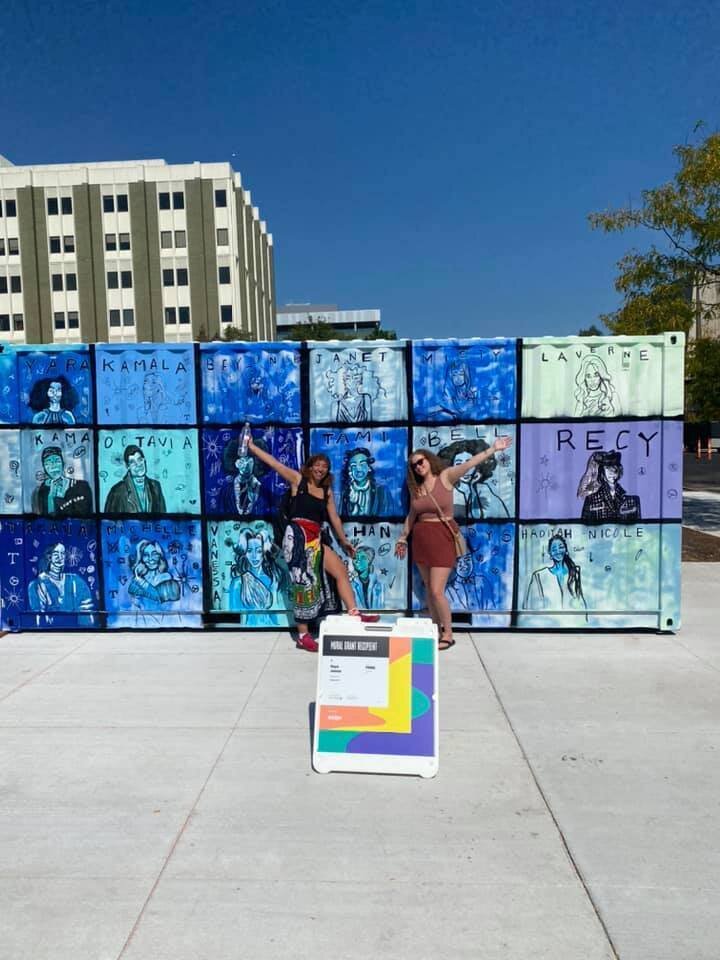
 Maya James and her friend unveiling the mural that Maya was commissioned to create on a storage container for Artprize 2021. Social practice art is everywhere. The increasingly rapid arts, humanities, and culture initiatives under the current administration are affecting the world around us at large. You, the reader, probably notice the ever-expanding number of small business and creative grants popping up in local arts councils such as the KADI grant with the Arts Council of Greater Kalamazoo, or the placemaking grants popping up in places like Grand Rapids, Detroit, and Lansing.
Maya James and her friend unveiling the mural that Maya was commissioned to create on a storage container for Artprize 2021. Social practice art is everywhere. The increasingly rapid arts, humanities, and culture initiatives under the current administration are affecting the world around us at large. You, the reader, probably notice the ever-expanding number of small business and creative grants popping up in local arts councils such as the KADI grant with the Arts Council of Greater Kalamazoo, or the placemaking grants popping up in places like Grand Rapids, Detroit, and Lansing.
More and more initiatives are integrating arts with a push for healing, economic growth, and education resulting in mural projects like the City Walls Project in Detroit, community arts education programs in schools, and after-school like the Education for the Arts Program here in Kalamazoo, and residencies like the Good Hart Residency in Emmet County, Michigan.
Community Art Centers like the Kalamazoo Institute of the Arts and Cultivate! in Grand Rapids are pushing diversity, equity, and inclusion tactics that are making arts education more accessible to low-income people and people of the global majority. In the historic summit hosted by the NEA and the Biden-Harris administration this last January, Jim Canales, president of the Barr Foundation, described the arts as “fundamental, essential and inescapable,” and Neera Tanden, Domestic Policy Advisor to President Biden and Director of the White House Domestic Policy Council referred to artists and those in the creative industry as “cultural workers,” in which President Biden is investing in showing his “unwavering support.”

 Maya creates murals on the walls of the YDC (Youth development center) in Kalamazoo with youth from local programs.In 2022, the Biden-Harris administration passed an “Executive Order on Promoting the Arts, the Humanities, and Museum and Library Services,” which states: “The arts, the humanities, and museum and library services are essential to the well-being, health, vitality, and democracy of our Nation,” and promising that under the current administration “the arts, the humanities, and museum and library services will be integrated into strategies, policies, and programs that advance the economic development, well-being, and resilience of all communities, especially those that have historically been underserved.”
Maya creates murals on the walls of the YDC (Youth development center) in Kalamazoo with youth from local programs.In 2022, the Biden-Harris administration passed an “Executive Order on Promoting the Arts, the Humanities, and Museum and Library Services,” which states: “The arts, the humanities, and museum and library services are essential to the well-being, health, vitality, and democracy of our Nation,” and promising that under the current administration “the arts, the humanities, and museum and library services will be integrated into strategies, policies, and programs that advance the economic development, well-being, and resilience of all communities, especially those that have historically been underserved.”
Recently the Biden-Harris administration has allocated $135 million for the National Endowment of the Arts in his emergency legislative “American Rescue Plan,” over $1 billion for libraries, theaters, and other cultural venues, and $16 billion for small businesses in the “Shuttered Venue Operators” grant program.
Social practice art is thriving. That’s why I have come to write for Southwest Michigan’s Second Wave as a Social Practice Correspondent. As an arts educator, muralist, author, and advocate for the arts economy in Michigan, I plan on writing and creating works for this community as a weapon of social change and returning to my roots in journalism with my heart and mind open to making the world a better place.
By engaging with our community and responding to issues related to fair access to arts, humanities, and culture in our area, in Michigan, and in our nation, it is my responsibility to inspire and empower our readers to liberate themselves using art as a platform.
Will you join me?
References:
- Cameron, Julia. “The Artist’s Way: A Spiritual Path to Higher Creativity.” TarcherPerigee, 2002.
- Camus, Albert. “Create Dangerously: The Power and Responsibility of the Artist.” Vintage, 2010.

